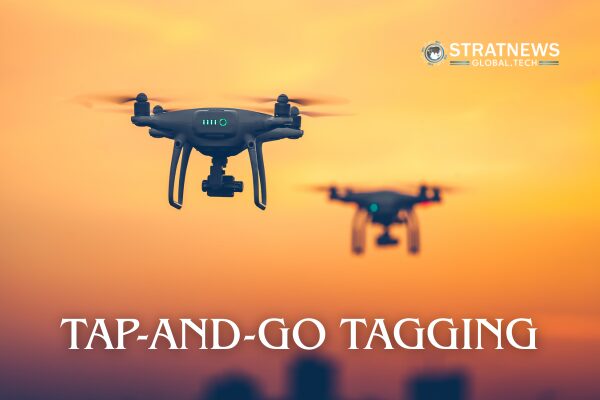Researchers Pioneer Drone-Based “Tap-and-Go” Whale Tagging
Scientists have developed an innovative “tap-and-go” method to tag whales using drones, offering a less invasive and faster approach to studying marine mammals. The breakthrough, published in PLOS One, comes from Project CETI (Cetacean Translation Initiative), a research effort dedicated to decoding sperm whale communication through non-invasive technologies.
A Gentler, Faster Alternative to Traditional Tagging
Traditionally, researchers have relied on pole tagging from boats, which requires close approaches and can disturb the animals. The new technique, tested on sperm whales off Dominica, instead uses modified First Person View (FPV) racing drones to place suction-based tags from above.
These tags collect vital data such as dive depth and bioacoustic recordings. Project CETI founder Professor David Gruber explained: “The tap-and-go drone tagging approach is a new way of being able to put basically a small computer on the back of a whale… the tag is just gently tapped on the back of the whale and then the drone goes.”
High Efficiency and Lower Costs
The study found that drones could attach tags in just over one minute, compared to three to five minutes for pole tagging. The success rate exceeded 55%, with most failures attributed to water on the whale’s back or safety concerns during the approach.
Drone pilot Zahrek Gonzalez-Peltier noted that safety remains a priority: “Sometimes if the drone goes up, but we deem it unsafe to tag at that moment, we will not tag. So the drone will be recalled.”
Importantly, the drone method is cost-effective, with components costing around $1,300, making it far more affordable than many traditional marine research tools.
Future of Marine Mammal Research
While challenges remain—such as the need for skilled pilots and the drones’ sensitivity to sea conditions—the method could pave the way for more automated whale tagging. This would expand research capacity and support conservation efforts worldwide.
Gruber emphasised the significance of the innovation: “Even just finding the whale and being able to get the tag on the whale at the right place in the most gentle way possible has been our challenge. This tap-and-go is one step forward and opens up new possibilities for this research.”
with inputs from Reuters


